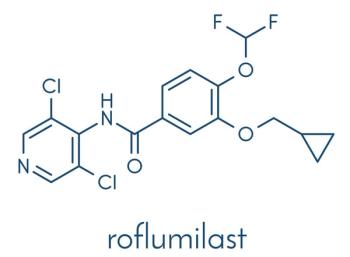
Capillary (Strawberry) Hemangioma
A 6-month-old girl presented with a reddish mass on the abdomen that was not apparent at birth and was first noted when the child was 1 month old. The lesion-which was asymptomatic-started to shrink and fade when the child was 3 years old. A year later, the color was very faint. When the child was 6 years old, the lesion was hardly visible.
A 6-month-old girl presented with a reddish mass on the abdomen (A) that was not apparent at birth and was first noted when the child was 1 month old. The lesion-which was asymptomatic-started to shrink and fade when the child was 3 years old. A year later, the color was very faint (B). When the child was 6 years old, the lesion was hardly visible (C).
This is a capillary (strawberry) hemangioma, a localized proliferation of fetal angioblastic tissue that fails to establish normal communication with the vascular system. The condition is three times more common in girls than in boys.
Capillary hemangiomas are rarely present at birth. They usually appear in the first few weeks of life as areas of pallor, followed by telangiecatic patches. They then grow rapidly into protuberant, sharply demarcated bright red masses.
The lesions consist of collections of dilated vessels in the dermis surrounded by masses of proliferating endothelial cells. Rapid growth continues for 6 to 9 months, at which time it slows to parallel the growth of the child. Involution begins in most cases by the time the child is 3 to 4 years old. A central graying of the lesion and shrinkage in size are the visible stages of this process.
Half of these lesions will show complete involution by the time a child reaches age 5; 70% will have disappeared by age 7; and 95% will have regressed by ages 10 to 12.
When involution is complete, the skin looks completely normal; partial involution may leave an atrophic area with a few telangiectatic vessels (D).
Newsletter
Enhance your clinical practice with the Patient Care newsletter, offering the latest evidence-based guidelines, diagnostic insights, and treatment strategies for primary care physicians.






















































































































































































































































































